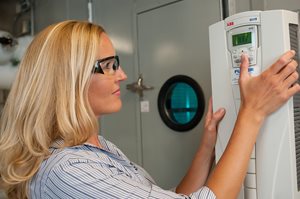(2/28/2022)
Hospitals are one of the biggest energy consumers in the business sector. They are open 24 hours a day, seven days a week, to assist patients seeking treatment and physicians providing care. Every hospital operation requires energy to function within its tight safety and environmental limits, which include environmental systems that maintain humidity levels and adequate pressurization and the ability to produce steam to disinfect equipment for procedures.

The cornerstone of a healthcare facility is patient care. Patients come first, even if energy efficiency and sustainability are high on the priority list. Knowing this, hospitals must find ways to balance patient care and energy efficiency to achieve the best results in both areas.
Managing Pandemic-Related Energy Footprints
We have learned a great deal about optimizing ventilation for an airborne virus in the past two years because of the COVID-19 pandemic, which undoubtedly strained our healthcare systems. In addition to placing energy recovery wheels offline as a precaution to prevent exhaust air mixing with ventilation air, applying HEPA filter scrubbers, erecting anterooms and additional medical equipment to support sick patients all generated pressure on energy usage.
Energy recovery wheels allow facilities to recycle exhaust air by passing it through a medium that recirculates it into the supply air. At the onset of COVID-19, facility guidelines mandated that there could be no more than 5% leakage from exhaust air to supply air. Because COVID-19 is an airborne virus, facilities must be careful not to mix potentially contaminated and clean air, and energy wheels may not fulfill this requirement.
Through the pandemic, we've discovered that recommissioning is the best solution for this system. Energy recovery wheels are excellent energy savers, and recommissioning them to guarantee appropriate filtering translates to a net gain in energy savings as well as patient safety. Retro-commissioning and recommissioning are all about optimizing existing assets – given the current condition of global supply chain difficulties, optimizing existing infrastructure for 2022 should be evaluated.
Applying Sustainable Technology
As technology evolves, the sophistication and advancement of products increases, which requires more training and education for those intended to use and maintain these systems. More importantly, we want to optimize the efficiency of these systems and apply sustainable technologies to our facilities. This could mean implementing point-of-use systems and products that are only activated when needed rather than waste energy in an idling state. Furthermore, retro-commissioning more systems such as kitchen appliances to electric power instead of natural gas will reduce reliance on fossil fuels and ultimately reduce their carbon footprint.
It’s understood that many factors go into these applications and they are primarily dependent on location. These transitions need to be designed to create a net gain, such as reducing total emissions. If a facility converts to electricity and the electric grid still burns coal, this does not offer any valid savings. It all comes back to sustainability and knowing the best fit for each facility. Make an effort to understand how the facility environment impacts patient care. Research products that are economical for the facility and sustainable for the environment. Balancing patient care and energy efficiency is almost always best achieved when facilities keep sustainability the driving force.
Want to learn more about applying sustainable practices in your facility? Request a consultation at
medxcel.com/contact/request-a-consultation or contact us at
info@medxcel.com or 855-633-9235.